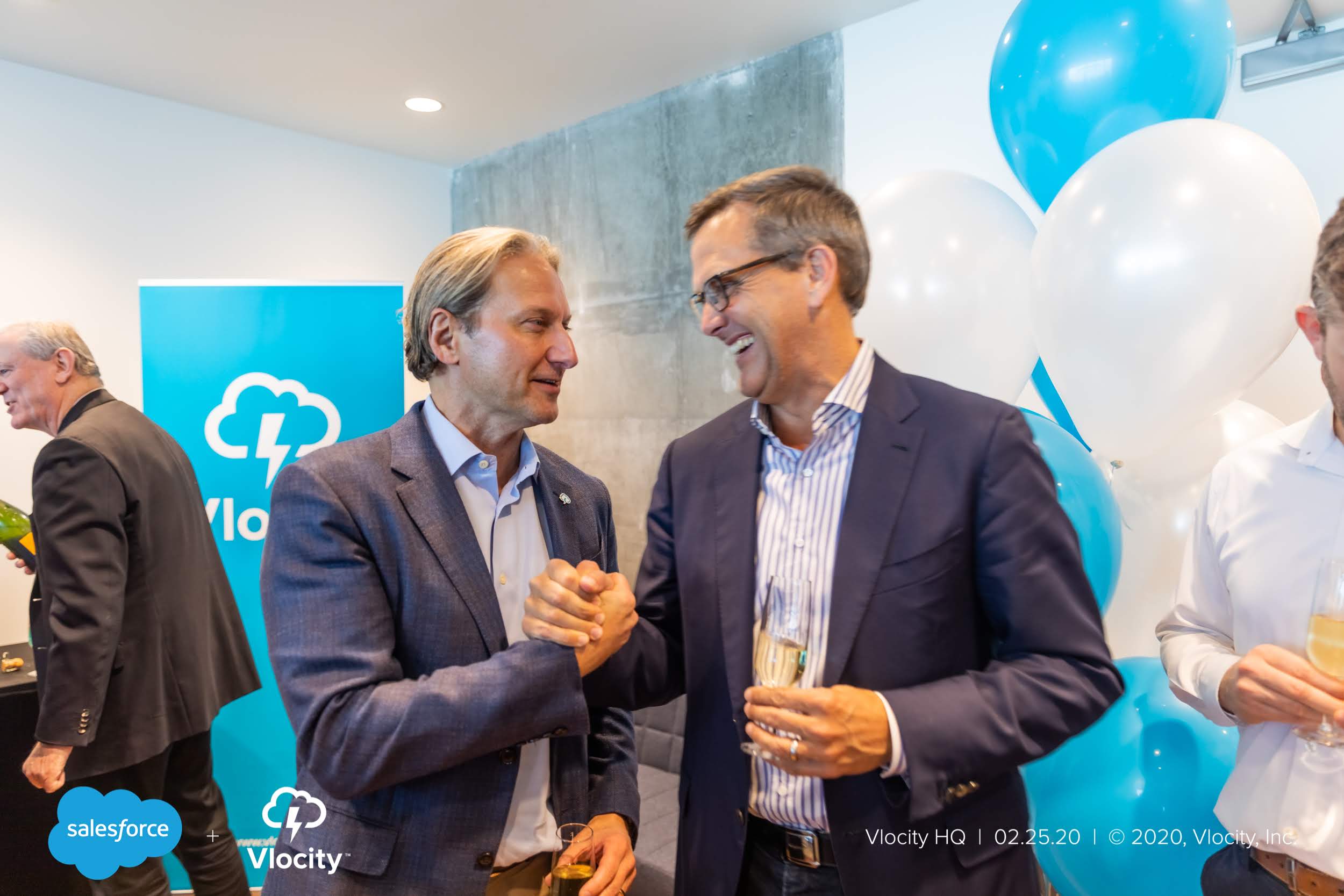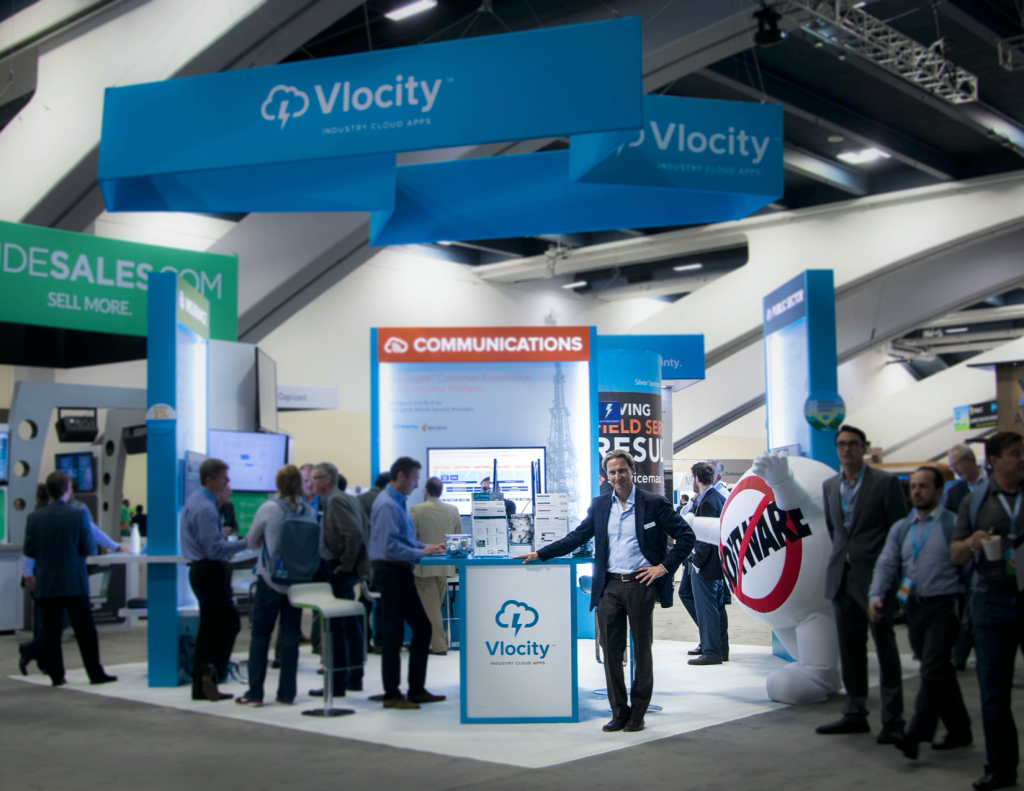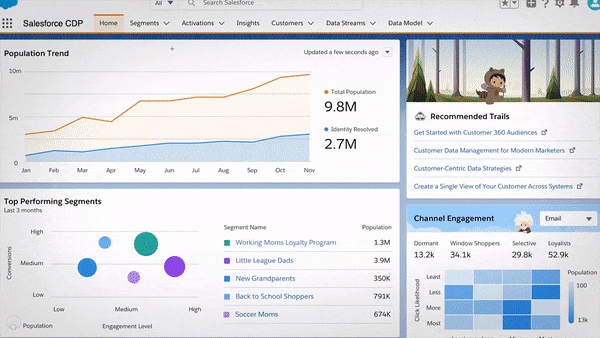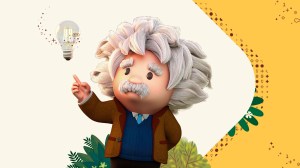From the age of 14, David Schmaier wanted nothing more than to grow up and become a software entrepreneur.
“I had this dream to help start companies and build amazing software,” Schmaier said, adding with a chuckle, “that’s my idea of a good time — building software and transforming companies.”
I had this dream to help start companies and build amazing software. That’s my idea of a good time — building software and transforming companies.
David Schmaier, Chief Product Officer, Salesforce
The accompanying twinkle in Schmaier’s eye holds business secrets and insights that have helped propel hundreds of organizations to success over the course of his thirty-year career.
His resume reads like a greatest hits list for the software industry elite: Schmaier started his career at Oracle in the late 1980s. He became a founding executive at Siebel Systems in 1993, the world’s first enterprise-class CRM software company, which Oracle acquired in 2005. Schmaier then went on to found Vlocity in 2014, the leading provider of industry specific software built on the Salesforce platform. It grew to become the fastest growing company in the AppExchange, a marketplace of more than 5,000 apps that enable businesses to extend the functionality of Salesforce. When Salesforce acquired Vlocity in June 2020, Schmaier worked as CEO of Salesforce’s Industries business, eventually taking on the role of President & Chief Product Officer for Salesforce.

His secret to success? Schmaier shares that it’s really just a matter of asking a simple question that he learned while in Harvard Business School:
“We would read hundreds of case studies and without fail, when we finished, the professors would always ask the same question: who is the customer?” Schmaier said. Then they would repeat the question: “who is the customer?” And once you thought they already made the point, they would ask a third time “who is the customer?”
“After a while, you started to get it — and no matter where you are, you find yourself asking that same question to uncover opportunities that ultimately improve the customer experience,” Schmaier said, adding that, “it’s really that simple.”
Customer experience: A higher calling
This customer-centric question has become routine in his career and his life; he frequently draws inspiration for new products and business ideas by applying this question to his own experiences. Schmaier even finds himself asking it throughout most of his daily tasks — like standing in line at the DMV, for example.
“I found myself wondering, why are we all standing in line here? We have tools to help with this!” Schmaier said. “The experience should be easy, frictionless, digital, personalized — and cool. The DMV and citizen experience should be as simple and straightforward as using Netflix or my Peloton.”
This is Schmaier’s passion: he manages to stay grounded by viewing problems from the eyes of the customer. It’s these types of observations that reveal Schmaier’s ability to uncover opportunities for how a process, experience, or product can be better and improved by focusing on the customer.
“Companies need to organize around the customer,” Schmaier said, adding that when they do, “Everyone wins. The business grows faster and builds loyalty, and the customer saves time and effort.”
Companies need to organize around the customer. The business grows faster and builds loyalty, and the customer saves time and effort.
David Schmaier, Chief Product Officer, Salesforce
The CRM (r)evolution
His work building Customer Relationship Management (CRM) technology — and that of his contemporaries — has paid off making CRM the fastest growing segment in enterprise software. Over the course of Schmaier’s career, CRM has blossomed from a niche market. According to the IDC Semiannual Software Tracker, CRM was a $67 billion dollar industry in 2020. Per IDC, the CRM industry is set to add another $40 billion in the next 5 years and will reach $107 billion. It’s an industry built upon the simple customer-focused question Schmaier learned at Harvard.

With this customer-centric philosophy propelling the industry forward, CRM companies have grown adept at meeting rapidly changing customer expectations in today’s digital world — harnessing a growing amount of data to tailor those customer experiences to increasingly nuanced, personalized touchpoints that meet the customer on their terms, wherever they may be. But it didn’t start out that way.
“When I started in this business, most companies built their own CRM systems. They were all focused on systems of record, which hold your customer data in silos that are not user friendly nor easily accessible.”
Over time, CRM has become increasingly proactive through real-time data integrations and artificial intelligence that extend personalization — ultimately transforming the way people can interact with brands. No matter where a customer might be, or which device they use, CRM has evolved to cater to the needs of the customer.
However, while all of this data can fuel predictive analytics and super-charge decision making, the challenge has always been weaving these data streams and intelligence systems together into a unified, real-time view of the customer, or what Schmaier calls a “single source of truth.”
“Now we’re coming into an era devoted to delivering a single source of truth.” Schmaier said, explaining that our current era of CRM aims to bring together disparate customer data points to create a holistic view of every customer.
Salesforce defines this single source of truth as a unified customer profile across all touchpoints that connects customer identities, data, marketing journeys, and privacy management. This unification ensures that businesses operate based on standardized, relevant data across the organization. This enables business leaders to make data-driven decisions based on the data from the business as a whole, rather than from compartmental data silos.
Take the example of a customer’s relationship with their bank. The customer might have several accounts: a personal checking account, a brokerage account, a mortgage and an account for a small business. They might have separate credentials stored on the company website, in wire transfer or payment processing systems, or within applications used in the credit card division. On top of this, the customer has accounts with other financial institutions, and credit scores from external credit bureaus. With all of these accounts and disparate sources of information, the customer wants each bank representative — whether that’s a loan officer or a bank teller — to know who they are and have all of that information easily available. On top of that, the customer wants one login for the bank, across all of these services.
The customer here wants seamless integration and access across their entire experience, and the single source of truth can make it a reality with real-time data and personalization. It’s a big deal — maybe the biggest in CRM history.
“This is the ‘Holy Grail’ of CRM. Think Big Data meets CRM. We’ve been talking about this forever, since I’ve been in this industry. Now it’s here and part of our next generation Customer 360.” Schmaier said.
This is the ‘Holy Grail’ of CRM. Think Big Data meets CRM. We’ve been talking about this forever, since I’ve been in this industry. Now it’s here and part of our next generation Customer 360.
David Schmaier, Chief Product Officer, Salesforce
The new holy grail of CRM
For Salesforce, this “holy grail” is an initiative that ties together the Salesforce family of products across sales, service, marketing and commerce, as well as Tableau, Mulesoft and other applications to unlock new possibilities within each industry-specific application.
Schmaier says that new products like Salesforce Customer Data Platform (CDP) have the potential to kick start the next era of the CRM industry.

Take Sonos for example: the COVID-19 pandemic forced many Sonos retail partners to close their doors, shifting how consumers discover and shop for Sonos products. At the same time, Sonos saw a surge in demand for its multi-room wireless home audio systems as people looked to upgrade their homes.
Sonos used the Salesforce platform to create a better, AI-powered customer experience that used chat bots to reduce call times, a direct-to-consumer ecommerce website that enabled customers to purchase from anywhere, and personalized engagement across social, email, and mobile channels. In this example, the customer gets a seamless, more convenient experience, and the Sonos team gains nuanced insight and a deeper understanding of their customer’s needs.
This is the current era of CRM: a faster, seamless experience benefitting both companies and customers through connected data and intelligence. And while companies continue to experiment with CDP pilots, Schmaier has his eyes set toward a future full of possibilities.
The future of CRM: All-digital customer experience
“In five years I think most businesses will be completely unrecognizable from the way they work today. We’ll ask each other — when was the last time you went into the bank or had your health check-up in person?” said Schmaier.
In five years most businesses will be completely unrecognizable from the way they work today. We’ll ask each other — when was the last time you went into the bank or had your health check-up in person?
David Schmaier, Chief Product Officer, Salesforce
The future, according to Schmaier, is a frictionless experience in any environment or industry, fueled by this single source of truth. This next era of CRM will be intelligent and real-time, and personalized for each individual customer. And digital channels will be the channels of choice.
To Schmaier, Salesforce customers like AT&T give a preview of this all-digital future. AT&T is deploying Salesforce Customer 360 to create a single view of every customer across every touchpoint—whether it happens in person at a storefront, over the phone, in a business setting or on any AT&T digital property or channel.
For the customer, the result is a highly-tailored, seamless customer experience across retail, contact centers, marketing, online, and business that provides customers with the products they want and the service they value.
Whether it’s this changing retail experience, a new type of virtual hospital waiting room, or a completely digital DMV experience, Schmaier sees businesses embracing the digital transformation catalyzed by the past year.
“In the future, all industries will be digital first, and all of them are going to collaborate with customers everywhere and anywhere,” Schmaier added.
Whatever these industries look like in the future, you can bet that Schmaier will still ask the core question he’s been asking since his career began. And chances are, he’ll use those insights to drive the future of CRM even further, with customer experience planted firmly at the center of the products that get it there.
Get a chance to ask David Schmaier your questions by catching the upcoming Success Anywhere World Tour on June 17th.



















